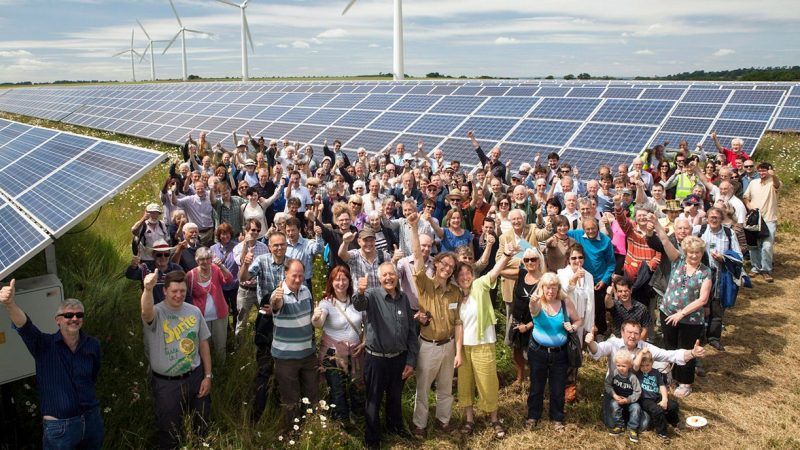
What are Sustainable Energy Communities?
The Climate Action Plan (2021) is ambitious, and sustainability energy communities (SECs) will play a key role in making it happen. SECs are part of a roadmap within the plan of over 500 actions. The goal is to reduce greenhouse gas emissions by 51% by 2030 from 2018 levels.
Major changes in how we approach energy use and generation are needed to get there.
For example, the transport and residential sectors accounted for more than 50% of energy-related CO2 emissions in 2021. Decarbonising these sectors is an urgent task.
However, it is not just a matter of pumping money into the private sector (i.e. subsidies) or waiting for new technologies to save the day. We need a social change too; energy generation and efficiency measures must happen locally.
This is where communities come in.
Communities across Ireland are playing a crucial role in decarbonising our island. But it’s not a case of doing without to save carbon either. Through the joined-up thinking that comes with SECs, communities can create new opportunities for those living in them.
Decarbonisation opens up the possibility of everything from increased self-sufficiency to revenue generation and community development.
To get there, individual SECs and the nationwide SEC network are essential. The three foundational goals for Sustainable Energy Communities are prioritising energy efficiency, using renewable energy sources, and employing smart technologies.
Here’s a quick guide to how SECs function and how to set one up.
The Growing Sustainable Energy Communities Network
An SEC is a community (this could be a village, town, rural area or even an entire city or region) where as many people and businesses as possible work together. Their goal: to create a sustainable energy system for everyone’s benefit.
Within an SEC, there should be a variety of energy users. These might include homes, sports clubs, community centres, churches, and businesses, big and small.
SECs will differ in different places, but they all share common aims to be energy-efficient, utilise renewable energy sources, and develop decentralised energy supplies. There are over 600 SECs in the national network, and the government’s policy targets 1,500 registered SECs by 2030.
Benefits of Community-Based Sustainability and SECs
Working together within an SEC creates a range of benefits for a community. For example, an SEC can:
- Reduce retrofitting costs in a community by grouping together retrofitting work requirements.
- Make grant applications easier by spreading the workload when filling out applications with the support of an SEAI SEC Mentor.
- Develop an energy master plan specific to a community’s local energy demands and aspirations.
- Support wider community development projects.
- Spot opportunities for sustainable development in their locality.
SEC Governance
An SEC must be operated and managed by establishing an SEC steering committee which:
- Engages with the broader community to develop a community charter
- Acts as a steering committee for the energy project process
- Leads the application for an energy master plan grant
- Procures the energy master plan consultant
The steering committee should be made up of different community members and representatives with varying sets of skill, expertise, and community interests. The steering committee should represent the broad range of interests of the community.
As there is no maximum number of members, it is essential to get enough members to share the committee’s workload. The steering committee should ensure the voices and needs of the wider community are considered in any potential sustainable energy initiatives.
This steering committee is supported by an SEAI mentor who guides the SEC through its development. The mentor provides assistance in recruiting members, helps to share success stories, outlines available support, networks with other SECs in the network, and helps with grant applications.
Starting an SEC in your community
With the guidance of the SEAI mentor and the support of the wider community, your SEC can play a pivotal role in Ireland’s energy transition and contribute to a sustainable future.
To establish an SEC and embark on your community’s energy transition, begin by bringing together a group of local people who might be interested in getting involved.
Starting an SEC can be done in a number of ways. For example, you could:
- Host an information evening in your locality
- Approach local organisations such as a GAA club, Tidy Towns group, or Credit Union.
- Publish a notice in a prominent community space such as a community centre.
These methods have all been previously used as first steps towards developing an SEC and the associated steering committee.
You can learn more about joining the SEC network on the SEAI website.